Growing lettuce is as easy as it gets, as long as you give them the proper care and environment. In this post, I’ll show you all you need to know in order to have the best success.
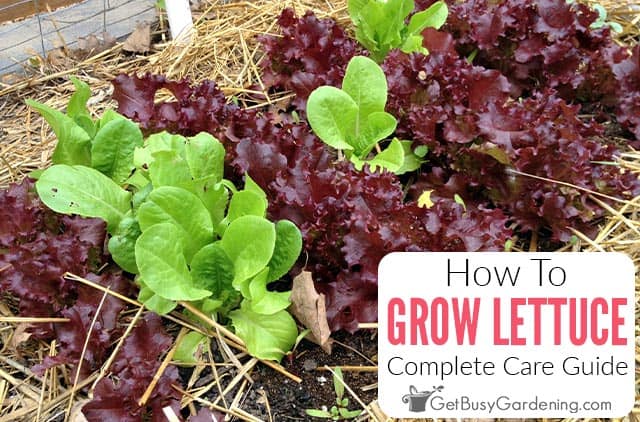
With an amazing range of assortment to choose from, growing lettuce in your home garden can be a fun and delicious project.
But understanding how to do it right might intimidate beginners.
With this guide there’s no reason to worry. I’ve shared all of the care tips you need to get started growing your own lettuce.
Below you’ll learn about when and how to plant it, and how to create that perfect environment to keep it thriving.
Quick Lettuce Care Overview
| Scientific name: | Lactuca sativa |
| Classification: | Vegetable |
| Common names: | Lettuce |
| Hardiness: | Annual |
| Temperature: | 50-70°F, protect from heat |
| Flowers: | Insignificant, blooms late spring-early summer |
| Light: | Full sun to partial shade |
| Water: | Keep evenly moist |
| Humidity: | Average |
| Fertilizer: | Nitrogen rich fertilizer monthly |
| Soil: | Rich, fertile, well-draining |
| Common pests: | Slugs, snails, flea beetles, aphids, rabbits, deer |
Information About Lettuce
Lettuce (Lactuca sativa) is an annual plant that belongs to the Asteraceae family, the same as a daisy. It’s been cultivated for nearly 2,000 years, and is still loved today.
It’s a cool-season leafy vegetable that can easily be grown in containers, raised beds, and gardens.
Some varieties form dense or loose heads, while others are leafy greens. The texture and flavor can range as widely as the colors.
Different Lettuce Varieties
It’s easy to get lost in the many different varieties and classifications of lettuce types.
Tenderness, flavor, color, and how it grows can vary greatly between them. Thankfully, the basic care needed is the same for all of them.
To keep it simple, you can think of lettuce in two different ways:
- Leaf Lettuce – These are varieties that grow individual leaves connected at a stem. They’re often crisp and delicately flavored. Check out Simpson, Grand Rapids, Merlot, Red Fire, or a Mesclun mix.
- Head Lettuce – These types form either dense or loosely packed heads. They can be round or elongated, and also vary in color. Look for classics like Bibb, Boston, Iceberg, or Romaine.
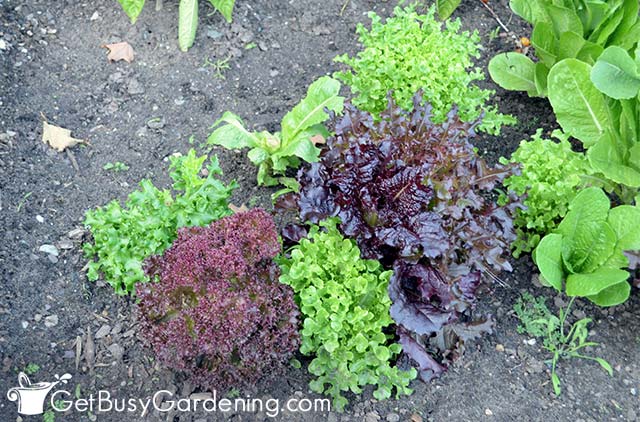
Hardiness
Most lettuces grow best in mild climates, and will survive much colder temperatures. They can withstand lows of 20°F, but won’t produce much until the weather warms above freezing.
Temps higher than 75°F, however, will cause the plant to bolt and set seed.
How Does Lettuce Grow?
The way lettuce grows will depend on the variety. All of them begin as tender young leaves that take shape as they mature.
Leaf lettuces grow from a central stem, with new leaves sprouting from the middle as the outer ones get larger.
Head lettuces will begin to form a cup shape in the center that turns into a dense or loose head as it develops.
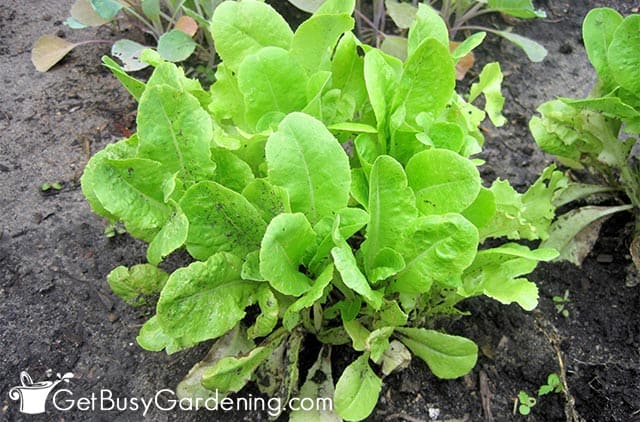
How To Grow Lettuce
Planting it at the right time of year and the location can make all the difference in how well your lettuce grows. Let’s talk about how to get both right.
Where To Grow Lettuce
Since it doesn’t take up a lot of room, lettuce can be grown successfully in garden beds or containers, even interplanted with other taller veggies.
Choose a spot that gets plenty of sunlight in the spring or fall, or a partially shaded area to protect them from the heat during warmer parts of the year.
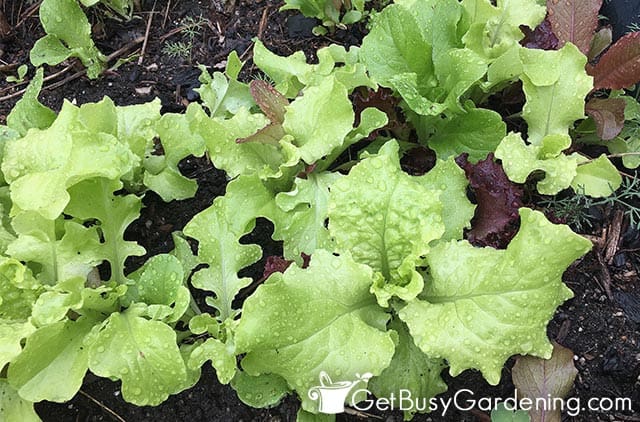
Best Time To Plant Lettuce
Lettuce will grow best in the cold, so it’s ideal to plant it as soon as the soil is workable in early spring. If you’re starting them indoors, aim for a month before that.
Avoid waiting too long. They need ample time to flourish before you expect heat in your region, especially the ones that form a head.
Lettuce Care & Growing Instructions
Now that you know when and where to grow your lettuce, let’s talk about how to care for it. Creating the ideal environment makes it stress-free.
Sunlight
In general, lettuce can grow anywhere from full sun to shade, depending on the time of year and the type.
Leafy varieties can tolerate the shade, while head lettuce will need more light. But for the best crop, they’ll need 4-6 hours of sunlight to flourish.
In warmer months, the afternoon sun and heat can cause bolting. So give them only morning and evening exposure, or use a shade cloth to shield them during those hours to prolong their lifespan.
Water
Shallow roots and leaves with high water content means lettuce needs a lot of moisture, especially when planted in a sunny spot.
Keep the soil evenly moist, and never let it dry out. Water deeply a few times a week, or whenever the top inch of soil feels dry. Use a moisture probe to make it easy.
Temperature
Lettuce is very sensitive to heat, and grows best when it’s between 50-70°F.
Once established, they can tolerate frost and temperatures down to 20°F. But when it gets that cold, it will slow or even stop their growth.
When it warms above 75°F, the plant will bolt, which causes the leaves to become bitter.
Fertilizer
Fertilizer is not necessary for quick-growing lettuce, especially those that were started in fertile soil.
But you can maximize their potential by using an all-natural nitrogen-rich fertilizer once a month.
Or choose balanced options like compost tea or fish emulsion. I recommend avoiding any chemical based ones, especially on your food.
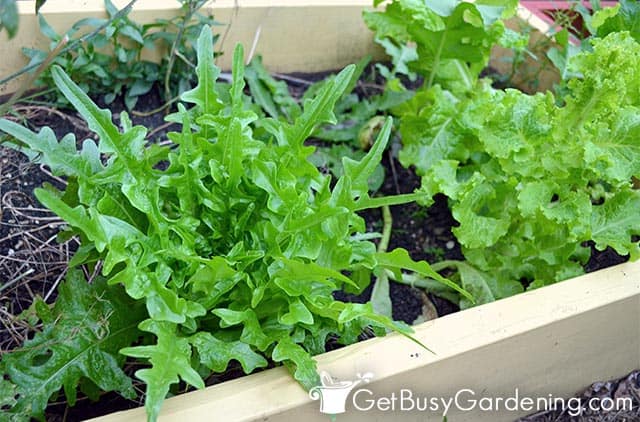
Soil
Fertile, well-draining soil that’s rich with organic matter is ideal for growing lettuce. They also like it alkaline, so aim for a range of 6-7 on your pH meter.
Amend heavy or sandy soils with compost or worm castings to improve drainage and nutrient availability, and add some garden lime to neutralize any acidity, if necessary.
Pest Control Tips
Lettuce is as popular among bugs and animals as it is to us. You may encounter issues with slugs, snails, caterpillars, flea beetles, or aphids, to name a few.
Insects can be treated with organic solutions, like hand picking, diatomaceous earth, neem oil spray, or insecticidal soap.
Making your own bug spray is easy by combining 1 teaspoon of gentle liquid soap with 1 liter of water.
Deer, squirrels, and rabbits can quickly decimate your crop. Row covers and fencing can be a huge help in deterring them.
Disease Control Tips
Mosaic virus, downy mildew, and leaf spot are among the most common diseases that can affect lettuce.
To prevent any issues, it’s best to water at the base of the plant to avoid splashing soil or moisture sitting on the leaves.
If you begin to notice disease, using an organic fungicide can help in the early stages. Otherwise, you can trim off the affected leaves, or remove and destroy the entire plant to keep it from spreading.
Tips For Harvesting Lettuce
You may be able to harvest continually, or just once, depending on the type of lettuce you’re growing.
Leafy types are cut-and-come-again. So you can take mature leaves as needed, and it will continue to replenish.
Head lettuces can sometimes be picked more than once by harvesting some of the outside leaves as the central bulb forms.
But often with these types, it’s best to simply allow the full head to form. Wait for the center to be firm and crisp, then pull the plant before it begins to open up.
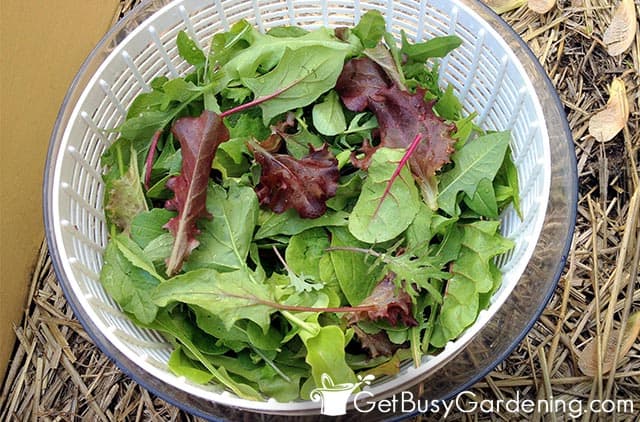
Troubleshooting Common Problems
Growing lettuce can be simple and low maintenance. But if you encounter one of these more common issues, here are my best tips for dealing with them.
Lettuce Going To Seed
If your lettuce has begun to bolt, or grow taller and form a flower stalk, then it’s too warm for them.
There’s little to be done once it starts, but try to harvest what you can before the leaves turn bitter.
If desired, you could allow it to go to seed, and collect them for next year.
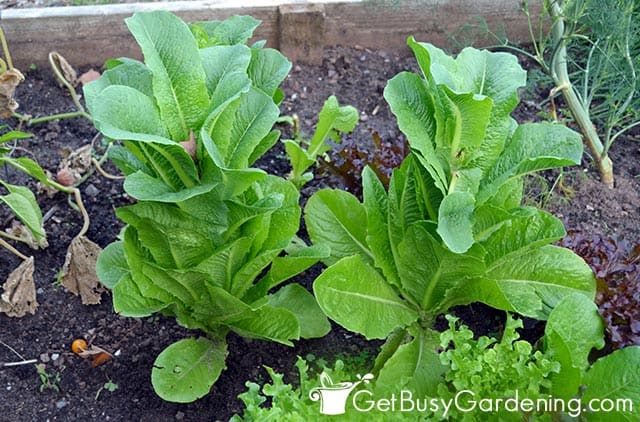
Plant Not Growing
Halted growth could be caused by extremely cool temperatures, lack of sunlight, poor nutrition, or too much water. They’ll thrive in temps above 50°F, and prefer at least 4-6 hours of sun a day.
Try fertilizing with a balanced water soluble or granular solution, and keep the soil moist, but avoid making it soggy or waterlogged.
Yellow Leaves
Yellow leaves are usually an indication of inconsistent water or lack of nutrients. Apply fertilizer, and make sure the soil is neither very dry, nor very wet.
It could also be a sign of disease, so trim away affected leaves and keep an eye on it.
Plant Getting Taller
Lettuce grows outward, not upward when flourishing. When it begins to put on height, that means it’s bolting.
The leaves will quickly turn bitter once this happens, so pick it right away to enjoy what you can of the crop.
FAQs About Growing Lettuce
Here I’ve answered some of the most commonly asked questions about growing lettuce. If yours isn’t on the list, please add it to the comments section below.
How long does it take to fully grow lettuce?
The range of time it takes to fully grow lettuce depends on the type. Leafy ones can be ready in as little as 30 days, while those that form a head can take up to 70 days to mature.
Does lettuce need full sun?
Lettuce can thrive in full sun, but doesn’t need it. Partial shade during the warmest hours of the day can prolong the growing season.
How often do lettuce plants need to be watered?
How often lettuce plants need to be watered depends on your climate and weather. Give them a good drink whenever the top 1” of soil feels dry, which may be more often during warmer periods.
What is the best month to plant lettuce?
The best month for planting lettuce will depend on your climate. They grow best in cold weather, so plant them as soon as the soil is workable in late winter or early spring. In warmer zones, you can plant them in when it starts to cool down in the fall or early winter.
What is the best time of year to grow lettuce?
The best time of year to grow lettuce is in the spring or fall when the weather is cool, or during the winter in warmer areas.
Will lettuce grow back after cutting?
Leaf lettuces will grow back after cutting as long as you haven’t disturbed the roots, and the weather is cool enough. Head varieties won’t form a second one after cutting off the first, so you can pull those.
It’s easy to get excited about growing lettuce in your garden now that you know how simple it is. Use these detailed care tips to guide you through the season.
If you want to learn how to create a beautiful and highly productive veggie garden, then you need a copy of my book Vertical Vegetables. It will show you all you need to know about growing any type of crop (including lettuce!) vertically. Order your copy today!
Learn more about my Vertical Vegetables book here.
More About Vegetable Gardening
- How To Grow Spinach At Home
- How To Grow Green Beans At Home
- How To Grow Radishes At Home
- 15 Fast Growing Vegetables To Plant In Your Garden
- 15 Colorful Vegetables To Grow In Your Garden
- How To Grow Your Own Sprouts At Home
Share your tips for how to grow lettuce in the comments section below.

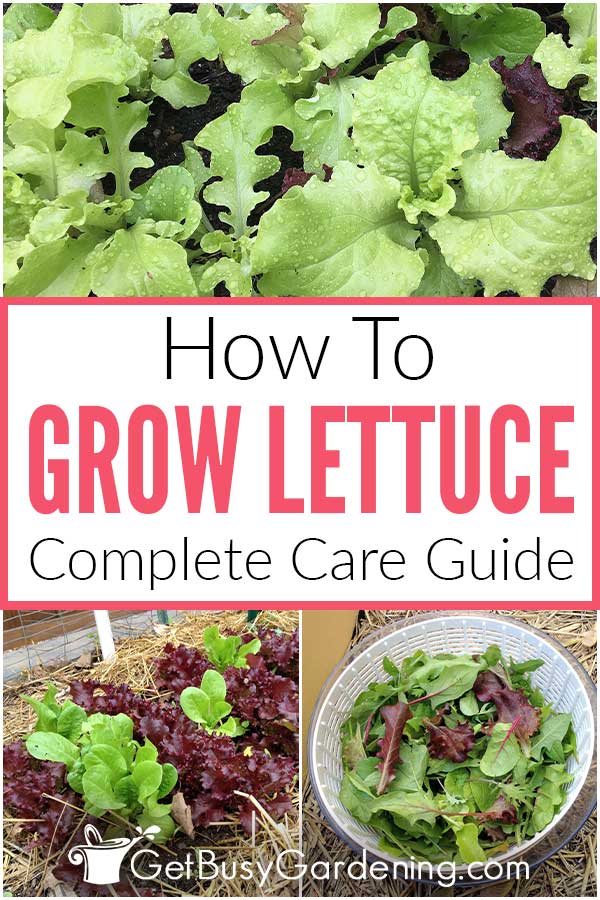
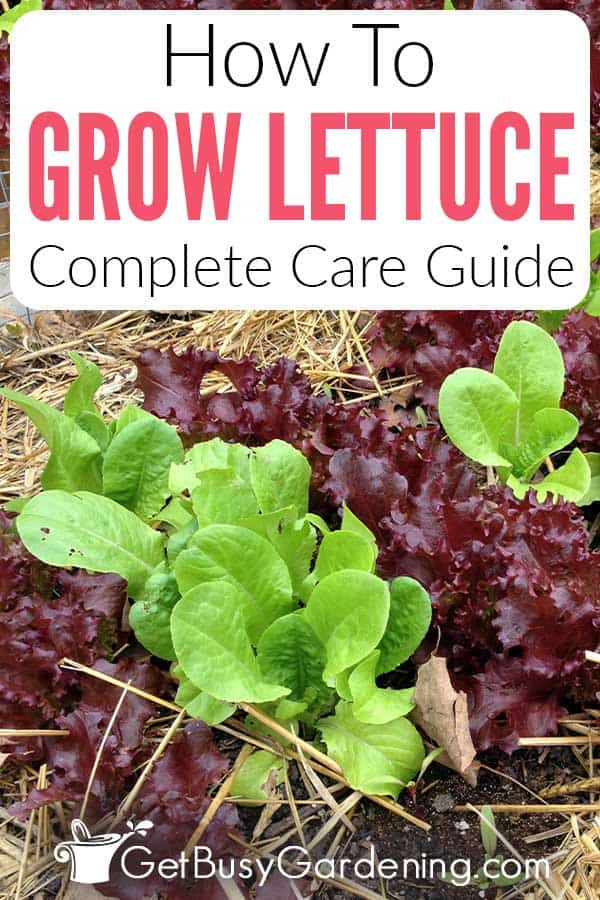



Leave a Reply